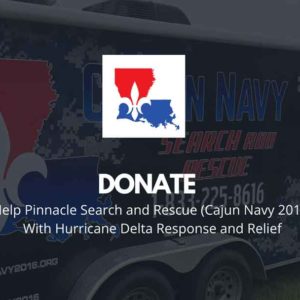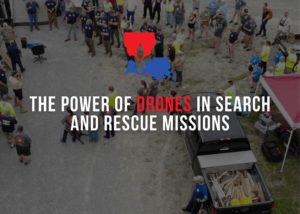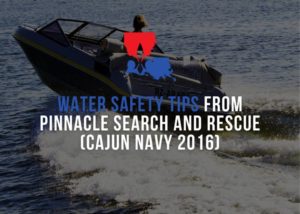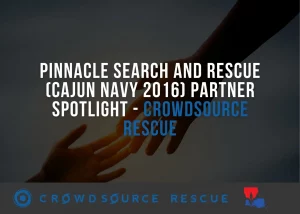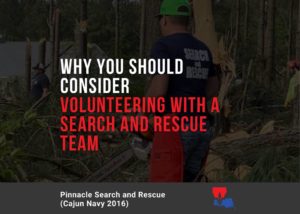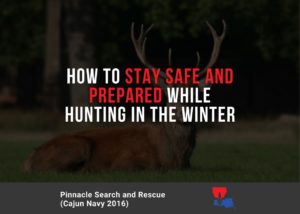Hunting is a great way to spend time with friends and family, but it can be dangerous in the winter.
The cold weather makes hunting more difficult because of the icy conditions, so you need to take extra precautions when out in the field. You should bundle up and dress for the elements, check the weather before going out, stay hydrated and well-fed, and practice gun safety.
We have some tips on how to stay safe while hunting in this article! Keep reading to learn more.
Related Reading:
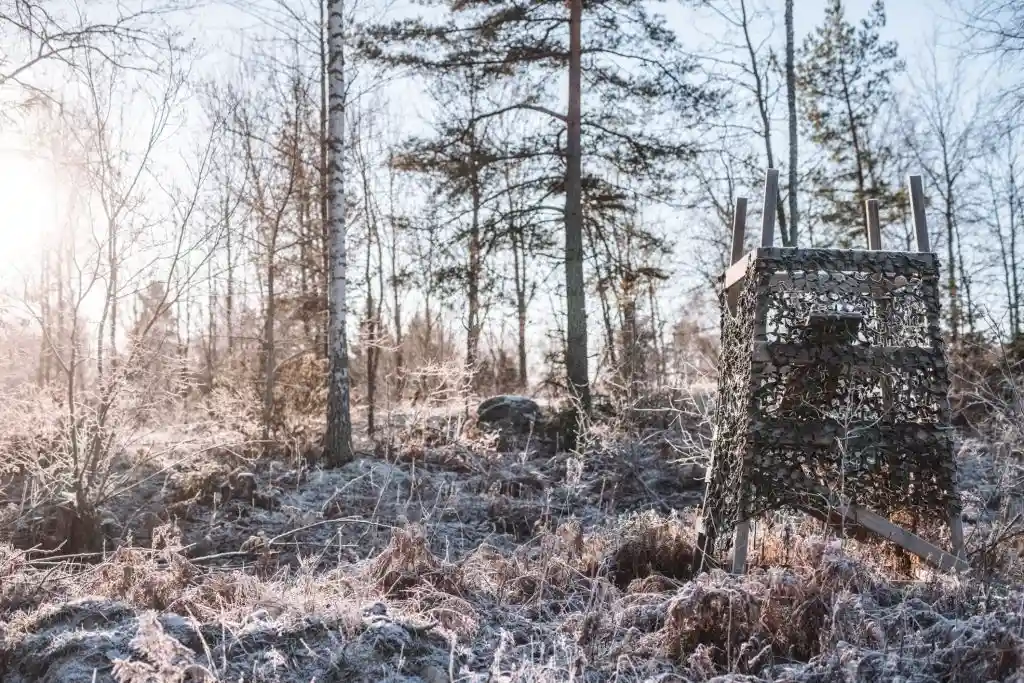
Check the weather before hunting.
When hunting in the winter, one of the most important things to do is check the weather before heading out. Be aware of both the temperature and the forecast and wind speeds and precipitation levels.
Hunting in bad weather can be dangerous, so it’s best to avoid it if possible. If you have to hunt in bad weather, be sure to dress appropriately and take extra precautions.
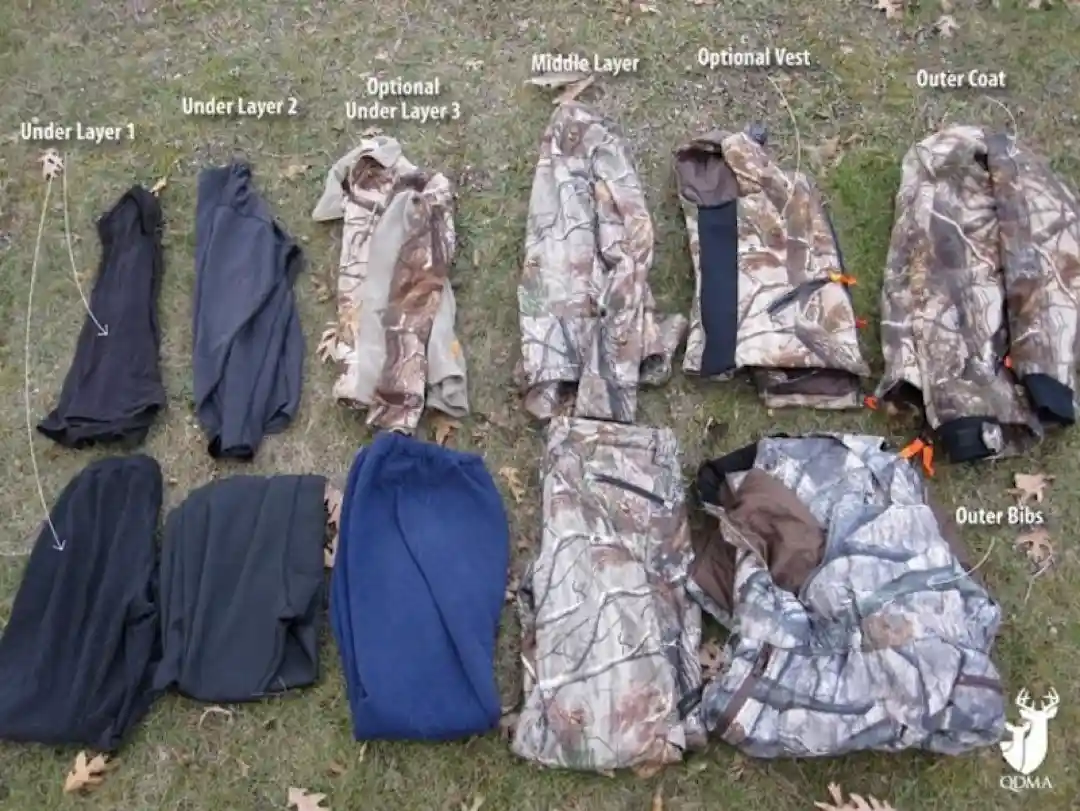
Image Source: Bowhunters United
Bundle up and dress for the elements.
When you’re bundling up, make sure to dress in layers. This will allow you to stay warm while also adjusting to changing temperatures. Wear a hat, gloves, and boots, and be sure to cover as much skin as possible.
Not only will covering as much skin as possible keep you warm, but it will also prevent animals from spotting you as quickly.

Stay hydrated and well-fed.
Hunting can be physically demanding, so staying hydrated and well-fed is essential. Bring plenty of water with you and pack snacks that will give you energy.
Some good snacks to bring with you include:
- Trail mix
- Jerky
- Granola bar
- Banana
- Nuts
You’ll want your snacks to be high in protein and carbs, as these will give you the energy you need to stay safe while hunting.
By staying well-fed, you’ll have more energy. This will keep you warmer when you are out in the cold for long periods, and it will give you essential nutrients to help your body stay healthy during those times.
Plus, you’ll be more alert for when that twelve-point buck you’ve been tracking finally shows up.
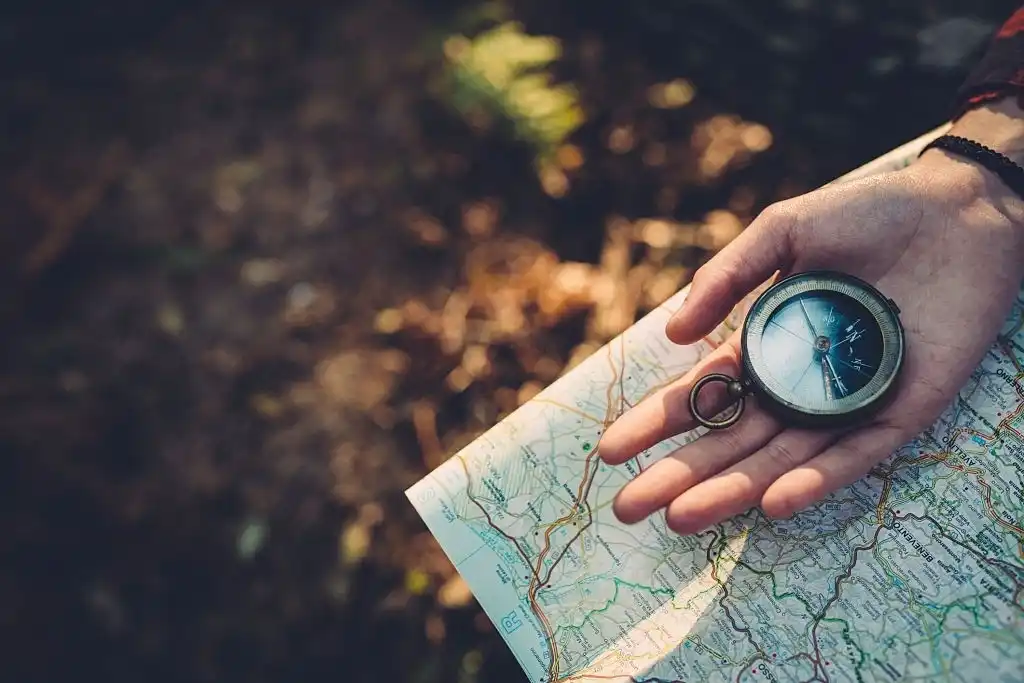
Know where you’re going.
Before you go out hunting, make sure to scout the area you plan on going to.
Know where your blind spots are, make sure there’s ample cover, and be aware of any water sources if you become stranded.
Knowing where the animals will come out will make it easier for you to set up a good spot that will give you the best chance at a successful hunt.
Don’t rely on your cell phone alone.
Although we’ve become accustomed to having cell phones with us at all times, they should not be relied on when hunting.
In the event of an emergency, your cell phone might not work if you’re in an area with poor reception.
It’s always a good idea to have a backup plan if something goes wrong. That way, you’ll be able to get help if you need it.
If you expect to be out for long periods, consider bringing a map and compass with you so you know how to get back home even without using your cell phone.
Make sure someone else knows where you’re hunting.
Before you go out hunting, make sure to tell someone else where you’ll be. This will help if something happens and you don’t return home when you’re supposed to.
If you’re going out hunting with a group, ensure everyone knows where they are supposed to meet up if someone gets lost or injured.
Using these tips above will help you get lost and be rescued by a search and rescue group (Like Pinnacle Search and Rescue).
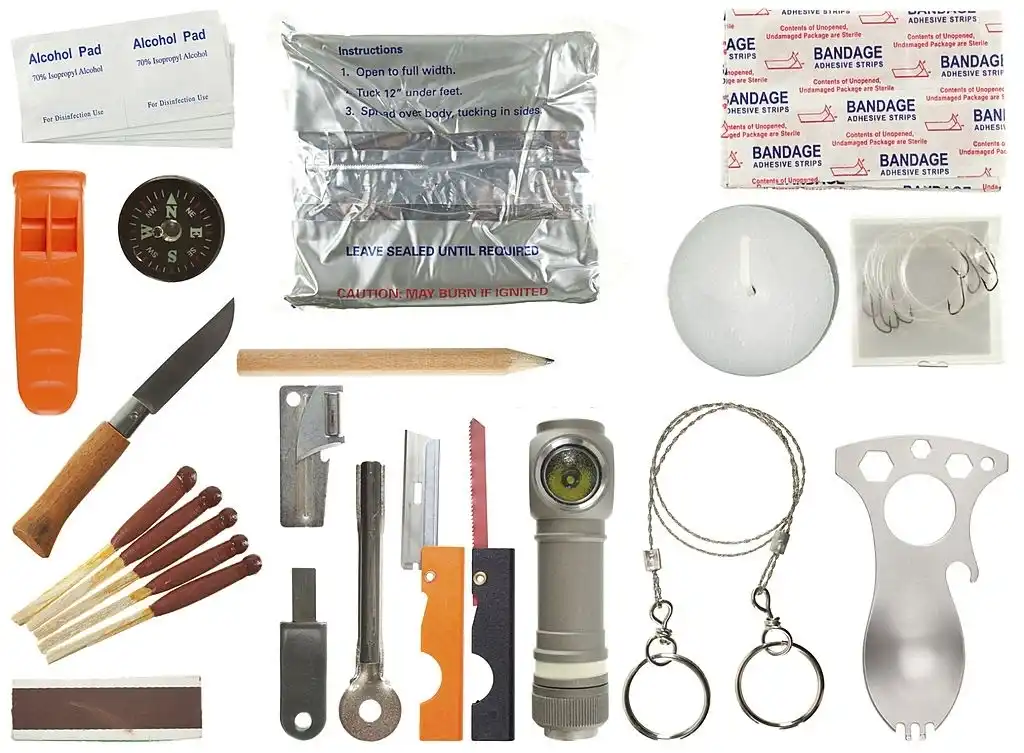
Bring proper tools for warmth and safety.
It would be best to bring a few tools with you when hunting in the winter.
Some of these tools include:
- Flashlight
- First Aid kit
- Knife
- Multi-tool
- Matches
- Emergency whistle
By having these tools with you, you’ll be able to stay safe and warm in case of an emergency.
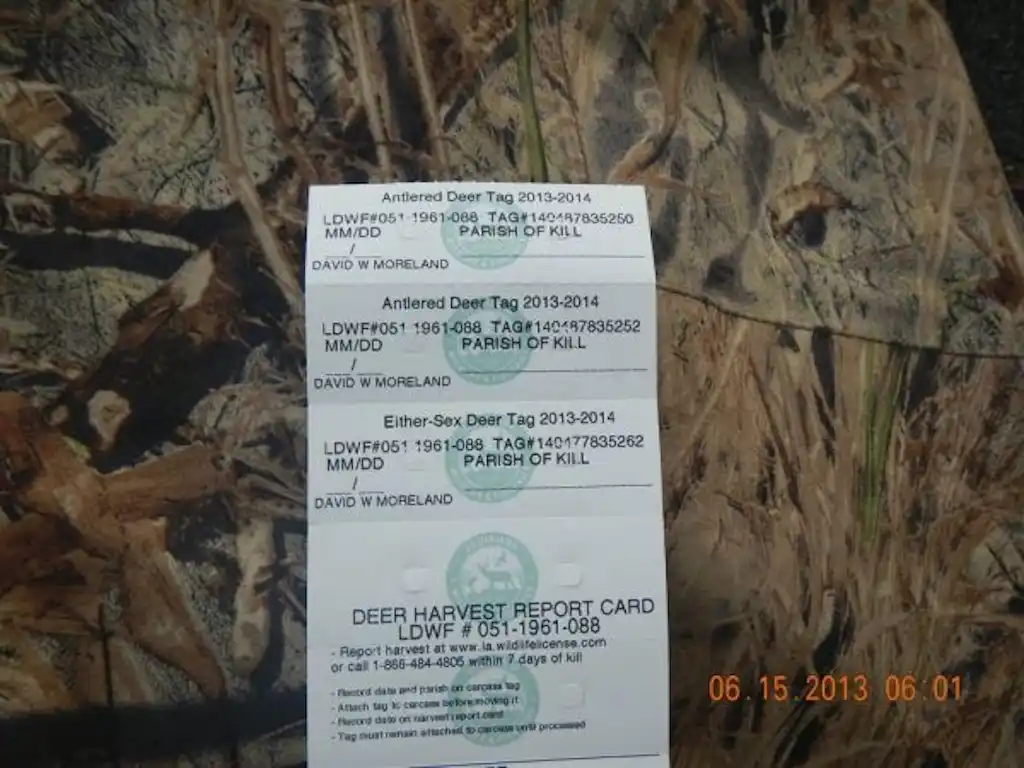
Image Source: Louisiana Sportsman
Make sure you have a hunting license.
Having a hunting license is required in most places, and depending on where you are, it may be necessary to pass a gun safety class before hunting.
There might even be limits in some areas regarding how many deer you can kill during the winter season.
By knowing the laws and regulations in your area, you’ll avoid any potential fines or penalties.
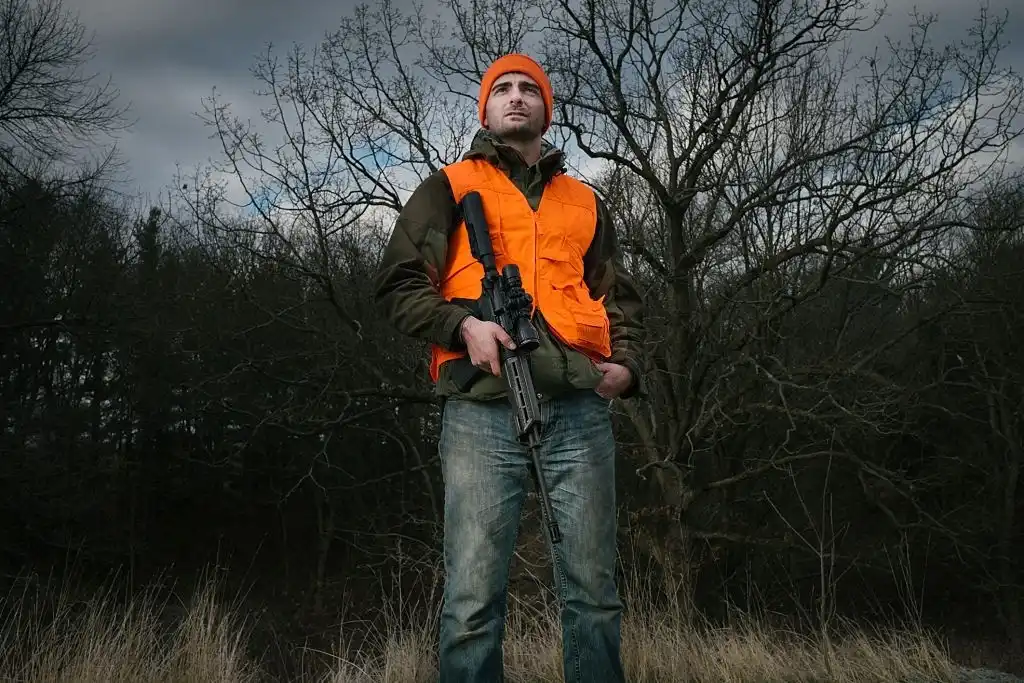
Always wear hunter’s orange.
In many states, it’s required by law to wear hunter’s orange when hunting.
This will help other hunters see you and help keep you safe while out in the field.
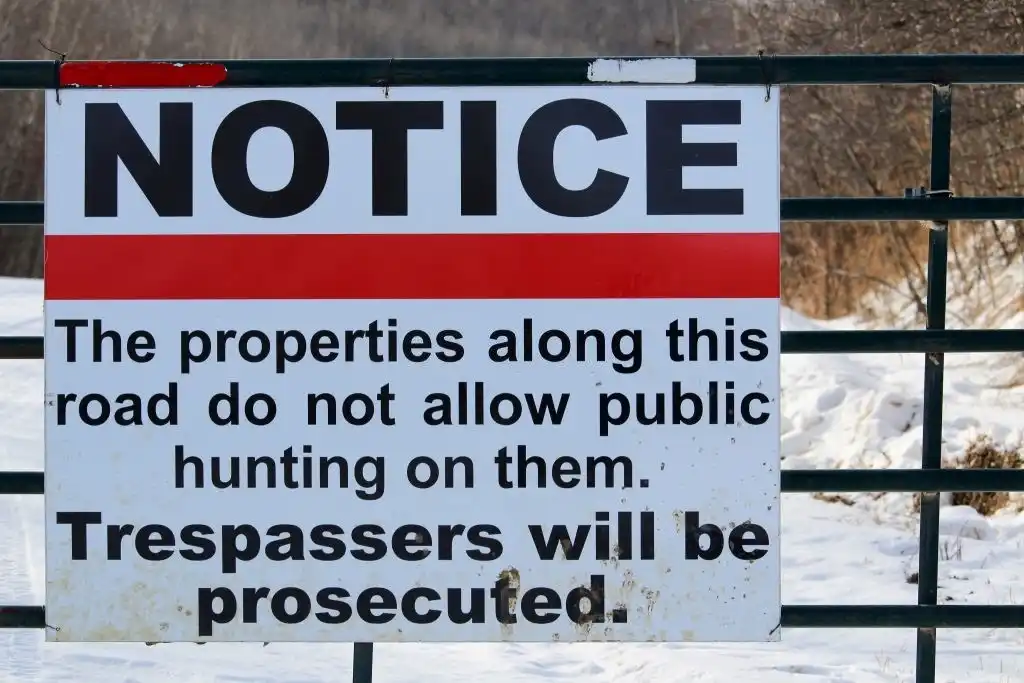
Know your boundaries.
If you are out hunting on someone else’s land, make sure to know the boundaries, so you don’t accidentally wander onto their property.
This might not seem like a big deal, but it could result in you being asked to leave or even trespassing charges if caught by the owner.
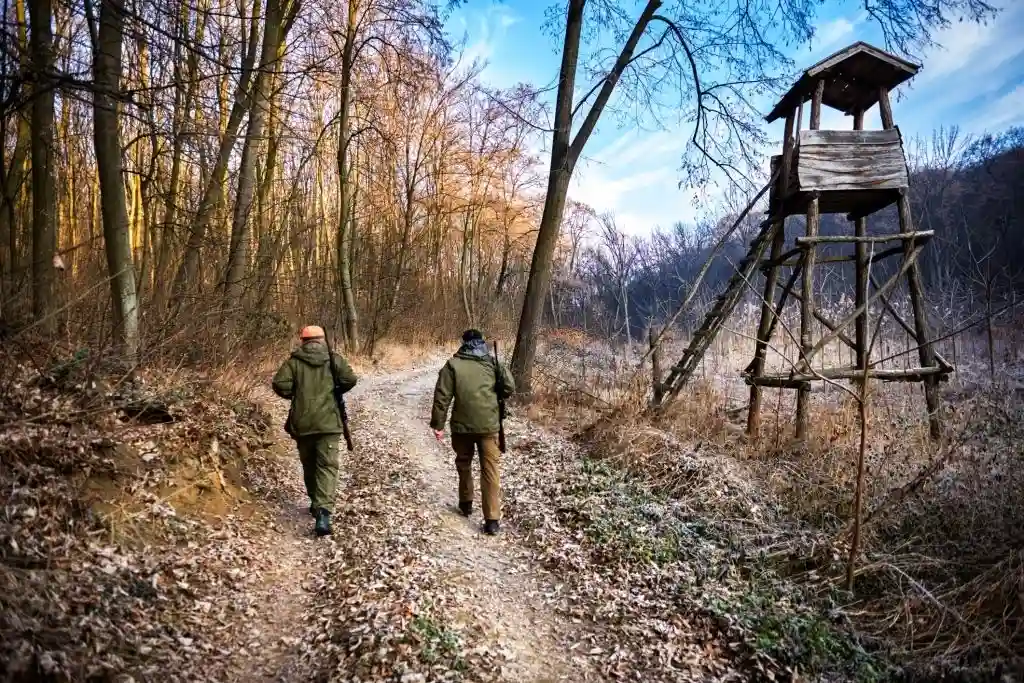
Stay aware of other hunters.
Although we all want to bag that big buck, it’s important to remember that there are other hunters out there as well.
Be aware of your surroundings and make sure you’re not inadvertently shooting at someone else.
Also, please pay attention to where other hunters are so you don’t mess up their hunt.
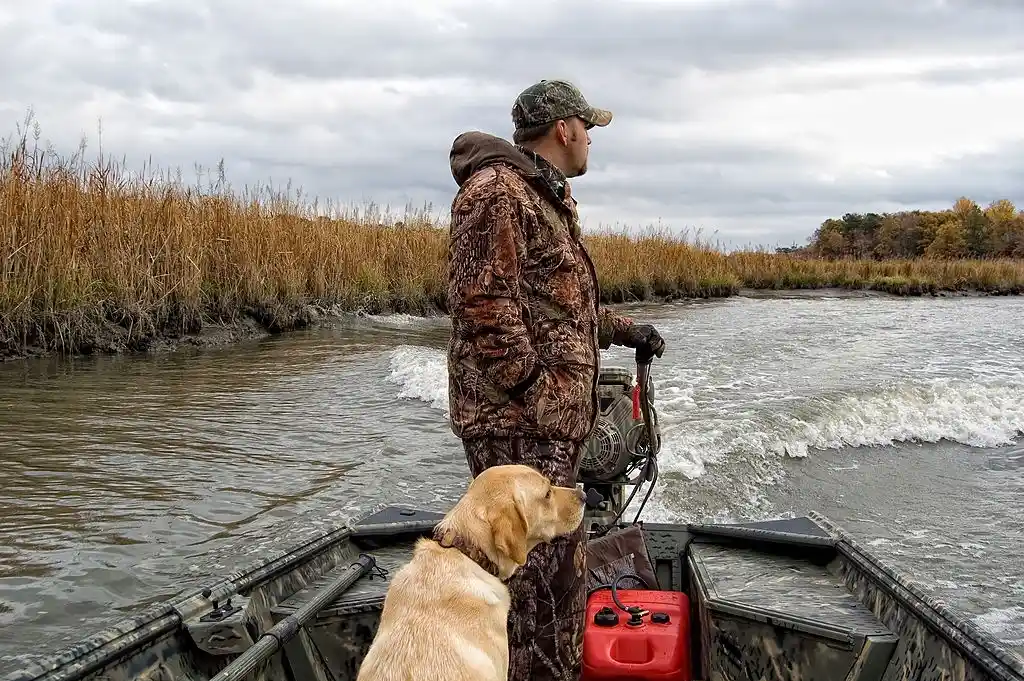
If you’re using a boat for hunting:
Small boats are commonly used by hunters to reach their favorite hunting grounds or to go after ducks. If you’re using your boat for hunting, you should:
Always wear your Personal Flotation Device (PFD).
It’s essential to wear your PFD as it could save your life if you fell overboard.
Obey all boating laws and rules.
It’s always best to be aware of the rules and regulations regarding boating, so you don’t put yourself or others at risk.
If you have to go through a no-wake zone, do so slowly. You don’t want to cause a wake that could knock over other boaters or push water into someone’s camp.
Know the weather forecast before going out in your boat.
In addition to knowing where you’re hunting, it’s good to know what the weather is supposed to be like before heading out on your trip.
This will help you dress appropriately.
Take additional precautions to avoid flipping or sinking your boat.
If you and your buddies are going out in a smaller boat, everyone must know how to swim and have a plan if something happens.
You should also:
- Keep in mind that tiny, flat-bottom boats are liable to capsize or swamp.
- Keep the weight low and distribute gear evenly in the boat.
- Never overstuff a boat. Never put too many people or equipment on a tiny hunting boat.
- Only well-trained canines should be allowed on board a tiny boat. A hyper dog may quickly capsize a boat. The dog should remain prone on the bottom, positioned in the vessel’s center.
- If you do capsize, take precautions to avoid hypothermia.
- It is vital to be aware that you must not fire shots or release arrows until the boat has come to a complete stop, the engine has been shut off, and the vessel is secured or adequately anchored.
- When shooting, always remain seated.
- Of course, whatever you’re hunting for requires a valid hunting license, tags, and permits.
Now that we’ve covered using your boat for hunting let’s discuss climbing trees.
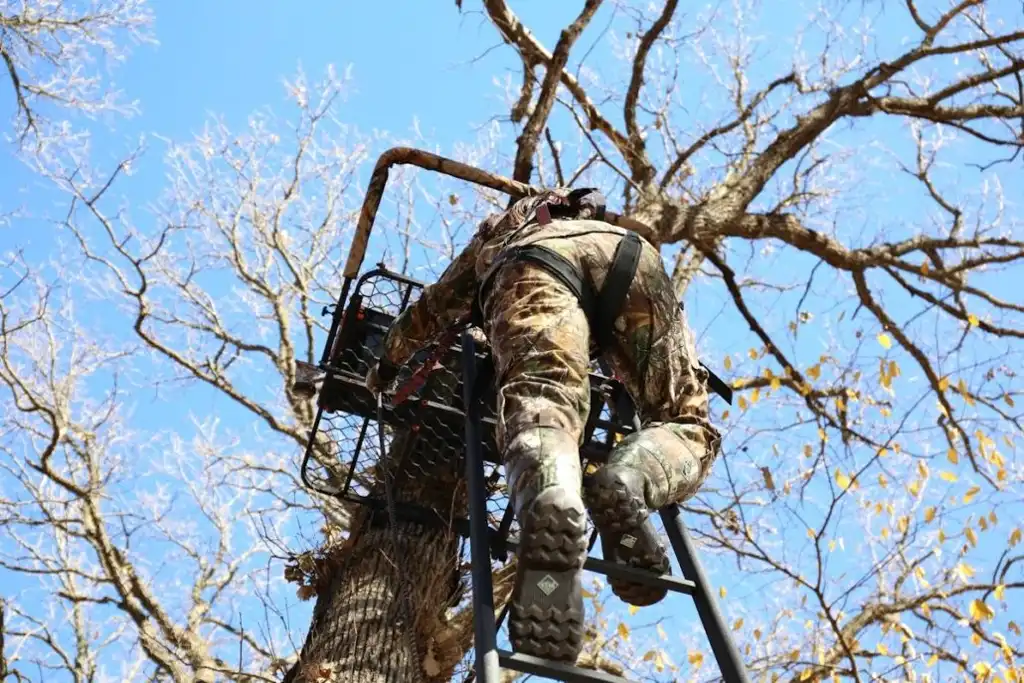
Be careful when climbing trees.
Be careful when climbing up and down when hunting from a tree stand.
This is especially important in the winter when the ice can make the tree branches very slippery.
Take your time and use a safety harness if possible to avoid any accidents.
Safety tips for commercial tree stands
Tree stands offer a better vantage point and earlier view of the game than hunting on the ground, but they also cause accidents during deer season.
Here are some safety tips when using a tree stand:
- Secure the frame to a tree using the proper methods.
- Before each season, read the stand’s warnings and instructions.
- Only stands that have been certified by the Treestand Manufacturers Association (TMA) to match your weight, and all of the gear you wear or carry on the stand should be used.
- Always use a TMA-certified and rated safety harness rated for you and any gear or equipment you might have on.
- Attach your safety harness to the tree when you climb down from the tree, during the hunt, and as you descend to the ground.
- If you’re going to use a tree stand, make sure it’s solid and that the tree is sturdy enough for your needs. You want to step down onto your tree stand to test its stability.
- Don’t climb a tree with a loaded weapon or an arrow drawn to shoot.
- Raise or lower your gear, including unloaded firearms and bows using a haul line.
Safety tips for tree blinds (deer stands).
Tree blinds offer the same advantages as tree stands and give hunters added cover and concealment.
Here are some safety tips when using a tree stand:
- Check your stand for loose screws, nuts, and bolts before each use.
- Make sure nothing is living in the tree or inside your blind that may pose a risk to you while hunting.
- Be extra careful when entering and exiting your tree blind – use a handrail if available.
- When hunting from a tree blind, always use a safety harness and attach it to the tree.
- Be aware of your surroundings, and don’t climb a tree with a loaded weapon.
By following these simple safety tips, you can stay where you can hunt best – in your tree stand or blind – and avoid any mishaps while doing so.
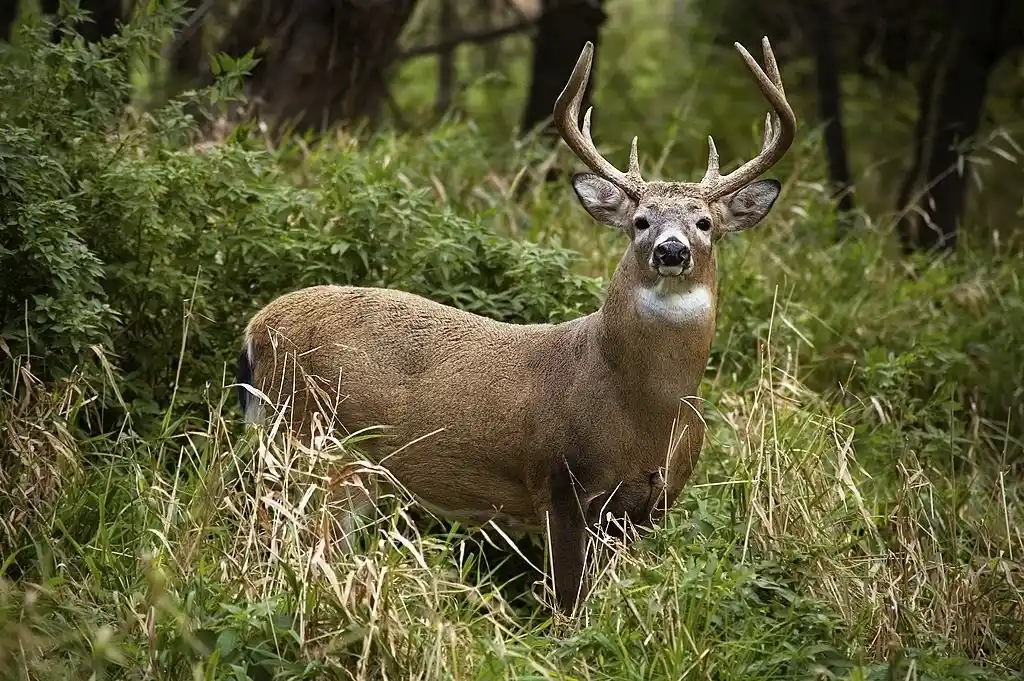
Know your limits.
We’re not talking about your limits; we’re talking about what you can and can’t harvest. If you are hunting, make sure you know what kind of game is allowed in your area.
For example, in some places, there might be limits on the number of deer that can be killed or certain seasons when it’s illegal to hunt.
Knowing your limits will keep you from accidentally poaching and getting yourself into trouble with the law, which leads us to our next point.
Here are Louisiana’s hunting schedules and limits for 2021-2022.
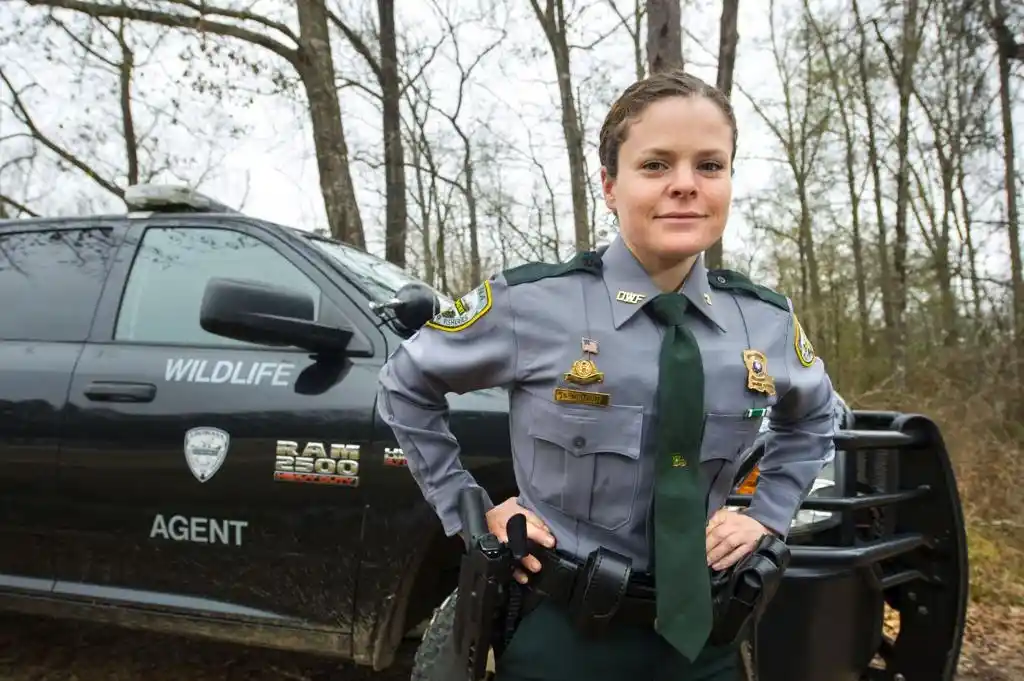
Image Source: The Advocate
Report violations.
If you suspect hunting violations, such as when someone is using illegal bait or not wearing orange when required, be sure to report them to your local game warden.
You can also remain anonymous if you’d like.
Game wardens are there to help keep the animals and hunters in their area safe, so letting them know about any illegal activity is the right thing to do.
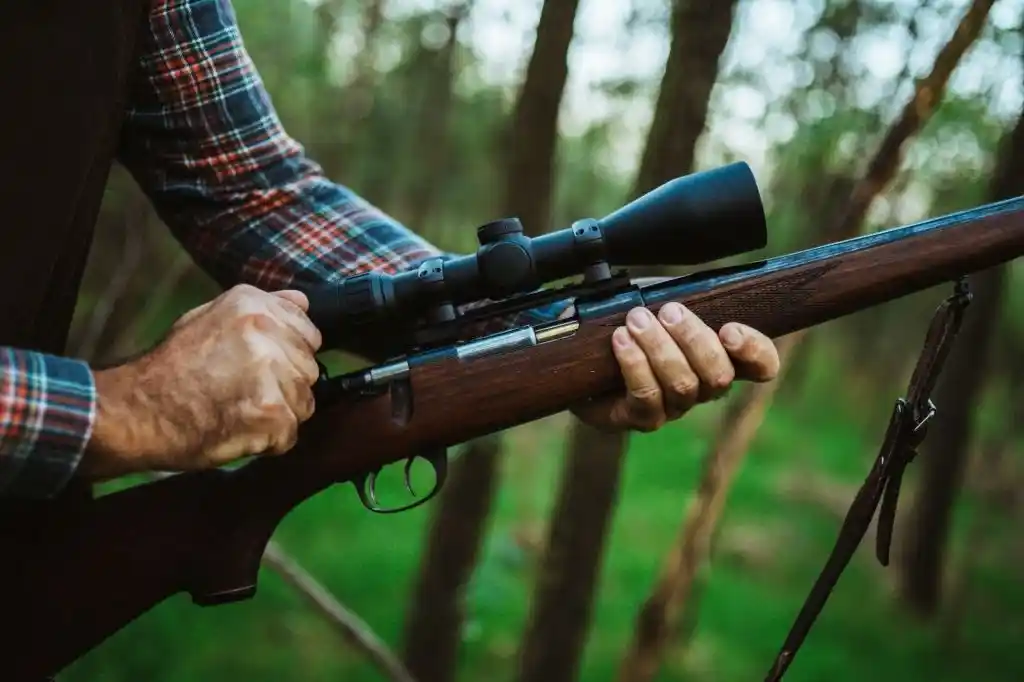
Practice gun safety.
One of the most important things to remember when hunting is always practicing gun safety.
Be sure you know how to handle a firearm properly, and be aware of your surroundings at all times.
Here are some gun safety tips:
Know the effective range of your gun.
Today’s hunting rifles can be highly accurate at long distances, but that doesn’t mean you should take shots too far away.
Make sure you know the effective range of your gun, and don’t take a shot unless you’re confident you can hit your target.
Never point a gun at something you don’t intend to shoot.
This is probably the most important gun safety rule.
Never point your gun at another person or animal unless you intend to kill it. Accidents happen, and sometimes a hunter’s bullet can travel beyond its intended target.
Keep your finger off the trigger until you’re ready to shoot.
This one is pretty self-explanatory. Keeping your finger off the trigger until you’re ready to shoot will help prevent accidental discharges.
Know the proper way to carry your gun.
Most people are familiar with the two-handed carry, holding your gun in both hands, but some prefer a one-handed carry.
You should always practice carrying your gun until it becomes second nature to you, and then continue practicing that way each time out hunting.
Be sure of your target and what’s beyond it.
When taking a shot, be sure you know exactly what the bullet will hit.
Don’t just consider what’s in front of your target; also think about what’s behind it.
You don’t want to mistakenly shoot a deer and have the bullet go through it and hit someone or something else.
Never take a shot you’re not confident in.
If you’re not confident that your shot will be accurate, don’t take it.
It’s better to be safe than sorry.
Take the time to line up a good shot before you pull the trigger, so you know for sure that you’ll hit what you’re aiming at.
Nothing is worse than tracking a wounded animal after dark in the freezing weather.
Use the proper ammo for your gun.
Using the wrong ammunition in your firearm can cause severe damage to both the gun and yourself.
For example, some guns are more powerful than others.
Using the wrong ammo for your gun will cause more damage to your firearm or cause you injury, so be sure to check what kind of ammunition is right for your gun before heading out into the field.
Don’t mix up your ammo, or you’ll risk damaging your gun and having a terrible day!
Use eye and ear protection.
When hunting, it’s essential to use both eye and ear protection.
Shooting a gun can be extremely loud, and it can also cause hearing damage over time.
Wearing hearing protection will help keep your ears safe while hunting, and wearing eye protection will help keep your eyes safe from any debris that might be kicked up when
Store firearms unloaded and out of reach of children.
This one is a no-brainer.
According to a study by Everytown for Gun Safety, There were at least 2,070 unintentional shootings by children, resulting in 765 deaths from 2015 to 2020.
This is why it’s so important to store your firearms unloaded and out of reach of children.
It only takes a second for a child to find a gun and accidentally shoot someone, so be sure to take the necessary precautions to prevent this from happening.
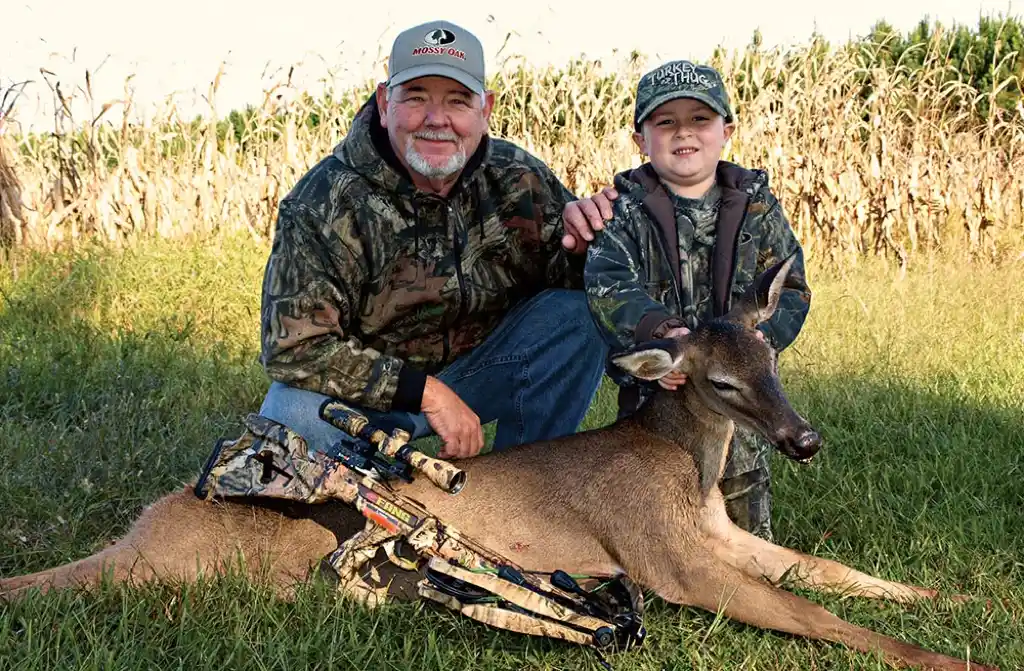
Image Source: National Deer Association
Conclusion:
The winter can be challenging for hunters, but you can stay safe and prepared while out in the field with the proper precautions.
Be sure to bundle up, dress for the elements, check the weather before hunting, and always stay hydrated and well-fed.
Practice gun safety at all times and know the proper way to carry your gun.
Be sure of your target and what’s beyond it before taking a shot, and never take a shot you’re not confident in.
Use the proper ammo for your gun, and always use eye and ear protection.
Finally, store firearms unloaded and out of reach of children.
With these tips, you’ll be well on your way to a safe and successful hunting trip this winter.
Now that you know how to stay safe while hunting, perhaps you’d like to consider becoming a member of Pinnacle Search and Rescue (Cajun Navy 2016).
We are a nonprofit search and rescue organization made up of dedicated volunteers who are passionate about helping others.
If you’re interested in becoming a member, please click here to learn more or give us a call at 833.225.8616.
Or if you’d rather support the Cajun Navy from the comfort of your own home, would you consider making a donation?
